Articles by Emily Hanscam
Environment and History, 2023
The sense of emergency is palpable and real. But instead of naming this moment a 'state of except... more The sense of emergency is palpable and real. But instead of naming this moment a 'state of exception', we should see it more as revealing pre-existing conditions. (Benjamin Bratton, The Revenge of the Real, p. 8) 1
Antiquity, 2023
We are grateful for the participation of the respondents and heartened at the general agreement o... more We are grateful for the participation of the respondents and heartened at the general agreement on the importance of a politically proactive archaeology. Inevitably, the authors offer differing perspectives on how best to achieve this goal, including the degree to which political engagement may foster the strength and relevance of the discipline (McGuire 2023), the limitations of landscape or assemblage perspectives for analysing these issues (Gardner 2023; Szary 2023), and whether or not such a call is even necessary because many archaeologists are already engaged with this type of research (Soto 2023). We appreciate the opportunity that these comments provide to us for critical reflection on our arguments; here, we briefly engage with the major themes raised as part of the ongoing dialogue.
Antiquity, 2023
For archaeology to survive in the present and for critical discourse on the past to thrive, archa... more For archaeology to survive in the present and for critical discourse on the past to thrive, archaeologists must advocate for the discipline's continued relevancy. In this Debate article, the authors illustrate the potential and challenges of such advocacy by examining contemporary perceptions of the Roman period Hadrian's Wall and how it relates to modern border landscapes-namely the US/Mexico border. They argue that archaeologists have not addressed the imagined continuity of socio-political narratives surrounding borderlands, calling for wider recognition of border materiality. The authors contend that the uncritical portrayal of the past, particularly in politically charged spaces such as border zones, can contribute to inequality and oppression in the present.
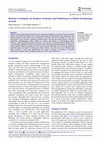
Journal of Field Archaeology , 2022
Studies of archaeology publishing demonstrate a persistent imbalance in the ratio of male and fem... more Studies of archaeology publishing demonstrate a persistent imbalance in the ratio of male and female authors. We present an analysis of the world archaeology journal Antiquity using submissions and editorial decisions data (2015–2020). We identify a recurrent ratio of one female for every two male authors across measures including all listed authors, solo and first-named authors, and team authorship. Disaggregating author gender by country and region of corresponding author, however, reveals substantial variation, opening a new avenue for understanding of global trends in archaeology publishing. We also assess peer review and editorial decision-making in relation to author gender, finding no evidence of bias and, using the 2020 data, we look for any potential gendered impact of Covid-19, finding solo female authors may have been more affected than those working in teams. We contextualize the results in relation to initiatives to diversify authorship, including capacity-building programs for early career researchers.

European Journal of Archaeology, 2021
The kind of liberal and open-minded society on which most academics rely to freely conduct their ... more The kind of liberal and open-minded society on which most academics rely to freely conduct their research is increasingly under threat, even within democratic societies of long standing. The past is by no means neutral in this, whether this be the then American president threatening to attack the antiquities of Iran in early 2020 (a war crime if carried out), or a right-ofcentre UK politician using a prehistoric henge monument to argue that Britain's future should lie outside the European Union (Brophy, 2019). These kinds of developments are generally described as 'populist', a term that refers to the simplification of complex problems and appeals to broad sectors of the population. Here, we follow Müller (2016: 3-4) in arguing that 'populism' also implies exclusionary and polarizing identity politics in which difference and dissent are treated as moral failings rather than questions for compromise.
ARCHAICA, 2019
The Romans and Dacians both played an important role in Romanian nationalism and in the construct... more The Romans and Dacians both played an important role in Romanian nationalism and in the construction of the modern Romanian identity. Their relationship is complex and frequently in conflict, as the political climate determined which mythical ancestor was seen as advantageous at the time. We suggest that the Roman ancestry was fundamental for the initial stages of Romanian nation and state-building, providing Romanians with a noble origin and a connection to Western Europe. As the Romanian state grew more mature throughout the 20th century, emphasis shifted to the Dacians, giving the nation even deeper, prehistoric roots which doubled as a claim to territory. In this article we explore the historical process of how the Romans and Dacians have endured together in Romanian popular imagination.
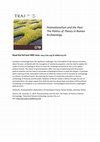
European archaeology faces two significant challenges: the intractability of old national narrati... more European archaeology faces two significant challenges: the intractability of old national narratives about the past, combined with the resurgence of reactionary populism, and the need to update the toolkit of social archaeological theory to meet the challenges presented by the current global political climate. The theory of postnationalism offers one way of addressing both the present political situation and the need to rejuvenate archaeological theory to meet this danger-it provides both a warning of how nationalism continues to influence research and an entreaty for archaeology to embrace its political nature. By exploring the history of scholarship and politics in Roman archaeology in Romania and the public reception of Roman studies in Britain through the lens of postnationalism, this paper argues that while the past has always been and always will be political, archaeology as a discipline is at a watershed moment-archaeologists must become unapologetic political actors.
The Theoretical Roman Archaeology Journal, 2018
The publication of this first issue of the Theoretical Roman Archaeology Journal (TRAJ) is an ind... more The publication of this first issue of the Theoretical Roman Archaeology Journal (TRAJ) is an indication of the accomplishments that the Theoretical Roman Archaeology Conference (TRAC) has had in the past (nearly) three decades. In the editorial for this first issue, the guest editors celebrate the successes of TRAC, but also reflect back upon its history to re-examine the field of Roman studies today. While Roman studies has become more diverse and inclusive over time, a lack of racial/ethnic and gender diversity is still apparent. The editorial here addresses this lack of diversity in an attempt to encourage scholars to engage more directly with such difficult issues.
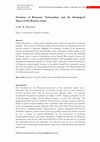
EX NOVO Journal of Archaeology, 2017
Modern Romania is a nation-state containing space which has long been considered marginal-first a... more Modern Romania is a nation-state containing space which has long been considered marginal-first as part of the Roman Empire and now within the European Union. The national narrative of Romania highlights this liminality, focusing on the interactions between the Romans and the local Dacians on the northeastern border regions of the Empire. Romania still contains significant material remnants of the Iron Age, including the Roman Limes, a series of fortifications on the Danube River meant to protect the Roman borders. As such, the archaeological tradition of this geographic space is heavily entangled with Romania's identity as a frontier region. This paper outlines the formation of Romanian national space, focusing on the period between the seventeenth century and 1918. It considers the relationship between the materiality of the Roman Limes and ideological frontiers in Romania, examining the role of archaeology in the sustainment of the Romanian nation space.
Book Chapter by Emily Hanscam

Digging Politics: The Political Past and Contested Present in East-Central Europe, 2023
Since the late nineteenth century, archaeological research on the ancient past in East-Central Eu... more Since the late nineteenth century, archaeological research on the ancient past in East-Central Europe has been impacted by the hunt for peoples assumed to be the one true ancestral population, continuously occupying the territory of the modern nation-state. In Romania, we see this with a myth of origin founded on the idea of firstly Roman, then Dacian, and finally Daco-Roman continuity, arguing that modern Romanians are directly descended from a population known from Antiquity. In Bulgaria and Hungary, we see myths of origin linked to the Bulgars and Magyars, respectively, deriving a national identity from the peoples who entered the region in Late Antiquity and the Early Medieval Period. These myths and the study of the past form a symbiotic relationship, creating and sustaining each other. This chapter focuses on Romania to illustrate how a regionally diverse past has been co-opted into a narrative supporting one nation's myth of origin. Using the same archaeological evidence from the region of modern Romania, I consider how we might construct archaeological narratives that give a similar sense of 'deep' belonging without supporting narratives of mythical autochthonous continuity.
Archaeological Sites as Space for Modern Spiritual Practice, 2018
Conference Organization by Emily Hanscam
TRAC 2017 will be held in Durham University, UK, 28-31 March 2017
Proposals for sessions should ... more TRAC 2017 will be held in Durham University, UK, 28-31 March 2017
Proposals for sessions should be emailed to: trac.2017@durham.ac.uk
www.trac.org.uk
We look forward to welcoming you to Durham!
Books by Emily Hanscam
Over the past few decades, there has been a significant amount of research on the Roman Lower Dan... more Over the past few decades, there has been a significant amount of research on the Roman Lower Danube frontier by international teams focusing on individual forts or broader landscape survey work; collectively, this volume represents the best of this collaboration with the aim of elevating the Lower Danube within broader Roman frontier scholarship.

Digging Politics explores uses of the ancient past in east-central Europe spanning the fascist, c... more Digging Politics explores uses of the ancient past in east-central Europe spanning the fascist, communist and post-communist period. Contributions range from East Germany to Poland to Romania to the Balkans. The volume addresses two central questions: Why then and why there. Without arguing for an east-central European exceptionalism, Digging Politics uncovers transnational phenomena across the region that have characterized political wrangling over ancient pasts. Contributions include the biographies of famous archaeologists during the Cold War, the wrought history of organizational politics of archaeology in Romania and the Balkans, politically charged Cold War exhibitions of the Thracians, the historical re-enactment of supposed ancient Central tribes in Hungary, and the virtual archaeology of Game of Thrones in Croatia. Digging Politics charts the extraordinary story of ancient pasts in modern east-central Europe.
Book Reviews by Emily Hanscam
Jahrbücher für Geschichte Osteuropas , 2022
This article may be downloaded and/or used within the private copying exemption. Any further use ... more This article may be downloaded and/or used within the private copying exemption. Any further use without permission of the rights owner shall be subject to legal licences (§ § 44a-63a UrhG / German Copyright Act).
Antiquity, 2021
Read this article for free How does Cambridge Core Share work? Cambridge Core Share allows author... more Read this article for free How does Cambridge Core Share work? Cambridge Core Share allows authors, readers and institutional subscribers to generate a URL for an online version of a journal article. Anyone who clicks on this link will be able to view a read-only, up-to-date copy of the published journal article.
European Journal of Archaeology, 2021
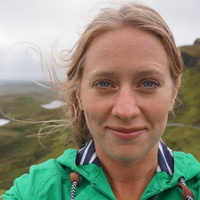

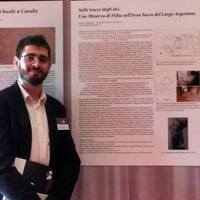


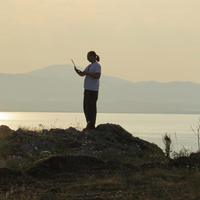
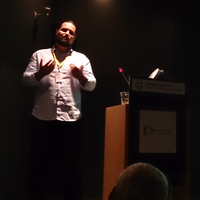


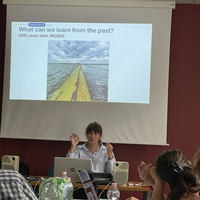

Uploads
Articles by Emily Hanscam
Book Chapter by Emily Hanscam
Conference Organization by Emily Hanscam
Proposals for sessions should be emailed to: trac.2017@durham.ac.uk
www.trac.org.uk
We look forward to welcoming you to Durham!
Books by Emily Hanscam
Book Reviews by Emily Hanscam
Proposals for sessions should be emailed to: trac.2017@durham.ac.uk
www.trac.org.uk
We look forward to welcoming you to Durham!
Recent decades have seen a global rise in inter-religious initiatives. Of late, however, inter-religious organizations and other stakeholders have expressed concerns about the challenges of talking about faith and across faiths, highlighting dialogue’s potential for failure and what might be ‘lost in translation’ in talk-based exchange (Brink-Danan 2015). Perhaps in response to these concerns, materially oriented inter-religious activities are becoming increasingly popular in Europe, the Middle East, North Africa, and elsewhere.
At the same time, the material turn in sociology, anthropology, and religious studies has shown the need to attend to the material and embodied nature of religious experience (c.f. Becker 2020; Eichler-Levine 2020; Fader 2009; Meyer and Houtman 2012; Naumescu 2017; Stadler 2022). Pushing back against earlier approaches focused narrowly on belief and text, scholars across these disciplines have explored embodied practices and material engagements. Thinking through space (Simmonds 2019; Victor 2022) and buildings (Bano & Benadi 2018; Coleman 2019), clothing and makeup (Badder forthcoming; Sagir 2021), light, music, and sound (Rakow 2020), aesthetics (Esposti 2018), ruins and archaeological sites (Hanscam 2018), and many more material forms, this wide-ranging body of work showcases the ways and contexts in which different objects and materials enable or support religious feelings. This body of work demonstrates the central role that material elements and ‘sensational forms’ (Meyer 2011) play in cultivating connections, belongings, and community across various religious groups.
Inspired by this turn and drawing on the growing literature on inter-religious relations (Egorova 2018; Everett and Gidley 2018; Hadžimuhamedović 2018; Özyürek 2022; Sheldon 2022; Taragin-Zeller forthcoming; Walton 2016) in a post-pandemic world where people are renegotiating face-to-face encounters (Kasstan 2022), this conference will explore materiality in the context of inter-religious encounters. We are seeking papers that explore questions in this area, including:
- How do material elements – from buildings to food to bodies – enable inter-religious relations, shape the texture of those relations, and facilitate respect and care?
- How do materially-oriented activities bring people of different faiths into interaction with each other?
- What links between dialogue and material things are at work in these various encounters?
- How is this process understood to build respect and peace?
- What are ‘materials-in-action’ (Guerrettaz 2021) capable of doing that dialogue cannot?
- What happens when these material inter-religious encounters intersect with the (secular) public sphere?
By focusing on the role of the material in inter-religious encounters, we hope to reveal an aspect of inter-religious relations so far uninterrogated by scholarship on interfaith relations, complicate the ideological/material, mind/body dichotomies often erected by inter-religious discussions and initiatives, and produce novel connections and insights that will lay the foundations for further investigation and praxis in this area.